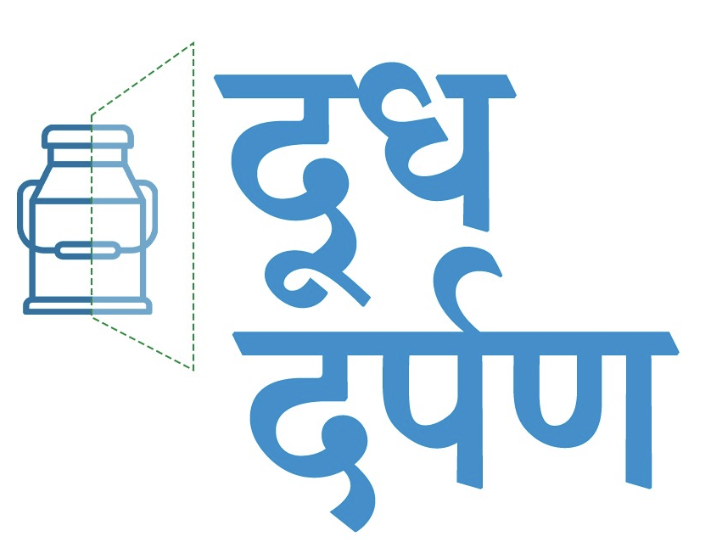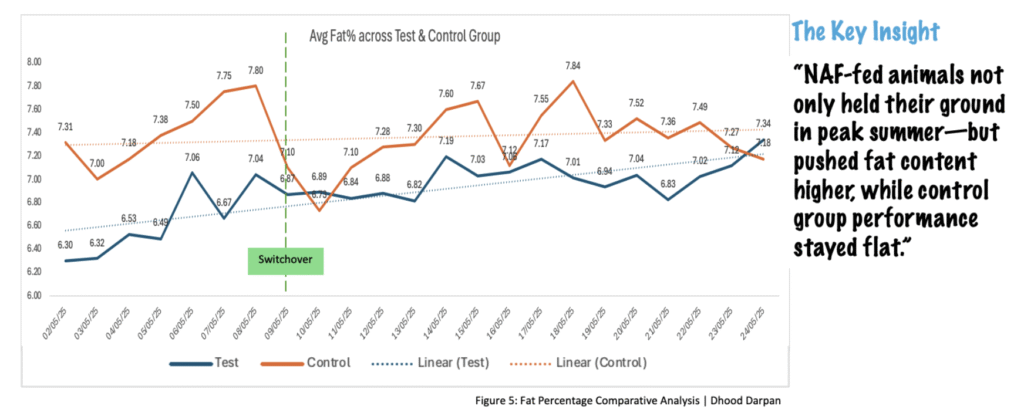Unlocking Milk Fat Gains
How Nutri Ankurit Feed Elevated Milk Fat by 5 %

Dairy farmers know that milk fat isn’t just a number on a lab printout – it’s a direct driver of market value. In most villages across India, milk fat fetches a premium; processors and cooperatives pay more for richer milk, elevating farmer profits. Yet delivering even modest fat improvements can require complex feed formulations or costly inputs.
Enter Nutri Ankurit Feed (NAF), a hydroponically grown green fodder developed by Shunya Agritech. The Doodh Darpan study, conducted over a 23-day trial in May 2025 (with the temperatures hitting 45C), compared two groups of buffaloes under identical management except for feed: one herd on conventional concentrates and forages, the other replacing 40 to 50 % of concentrates with NAF and of course the green feed added due to NAF. Researchers tracked milk yield, milk composition (fat, SNF), animal health markers, and farm economics under real-world smallholder conditions.
The Headline Insight: 5 % Milk Fat Uplift
Animals on NAF saw average milk fat climb from 6.67 % to 7.00 %, a relative increase of 5 %, while the control herd hovered around 7.27 % both before and after the trial.

• Why this matters: In many Indian dairy markets, every 0.1 % milk-fat rise can translate into ₹0.30–₹0.50 per liter extra. A 0.33 % boost (as seen here) can yield ~₹1 per liter premium – significant for herds producing 2–3 L per animal daily.
• Biological mechanism: Hydroponic fodder delivers highly digestible fiber, moisture, and bioavailable nutrients that shift rumen fermentation toward acetate production – the biochemical precursor for milk fat synthesis.
• Economic takeaway: This fat boost requires no additional infrastructure – farmers can integrate NAF into existing feeding routines with minimal training.
Wider Learnings & Context
- Lactose & SNF Stability: Lactose (milk sugar) remained at ~4.8 % in both herds, and SNF (Solids-Not-Fat) moved only marginally (8.73 → 8.75 % in NAF; 8.14 → 8.26 % in control). This shows NAF’s fat gain didn’t dilute or skew overall milk solids – a key for processors who calibrate pasteurizers and cheese vats based on SNF ratios.
- Palatability & Intake: Farmers reported no feed sorting or refusal when substituting up to 50 % concentrates with NAF.
- Processing Opportunities: Higher-fat milk opens doors to artisanal ghee, paneer, and flavored butter products. Local cooperatives could brand NAF-fed milk items as “Cream-Rich” or “Green-Fed” for niche markets.
- Sustainability Angle: Hydroponic fodder uses 90 % less water than field green-fodder and avoids chemical fertilizers. Fat gains here are achieved with a smaller environmental footprint.
Download the full Doodh Darpan report to understand the full impact on incomes of farmers.

